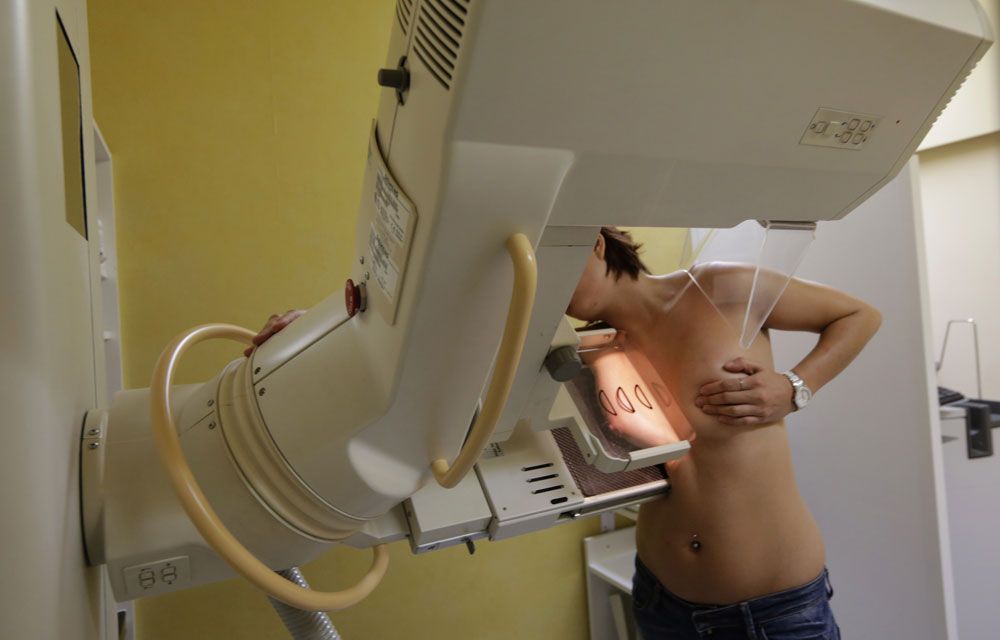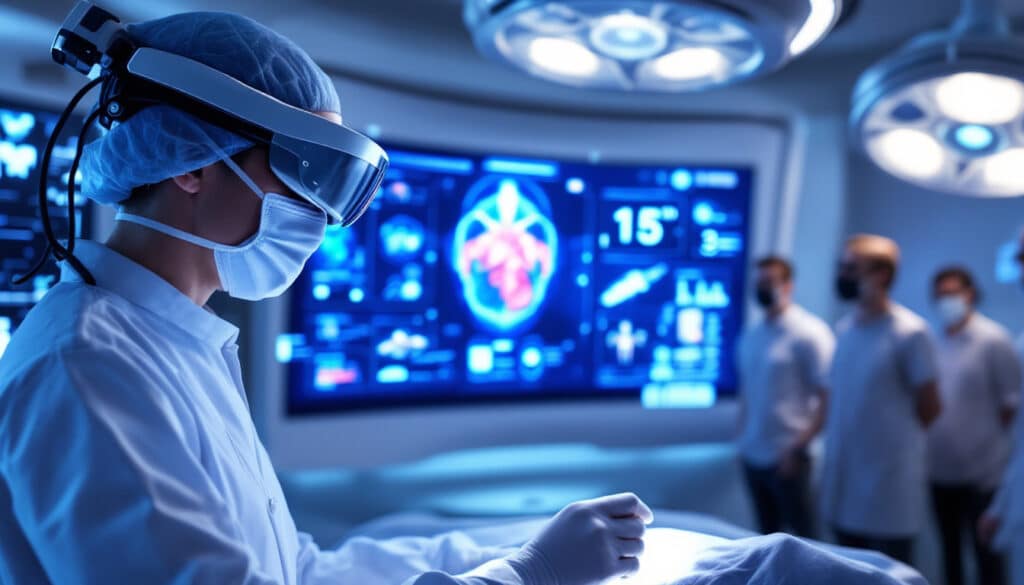Detection and management of rare diseases represent a major challenge for the health system. Due to their limited prevalence, these pathologies require adapted tools for diagnostic guidance effective. In order to improve patient care, various experts have developed innovative resources and technologies. Research continues to play an essential role in the development of treatments whether through public funds such as FITURARE or the integration ofartificial intelligence. Thanks to these advances, it becomes possible to deepen our understanding of the mechanisms of rare diseases, while promoting access to precise diagnoses and appropriate care.

Detection and management of rare diseases represent a significant challenge within the global health system. In reality, it is estimated that between 6,000 and 8,000 rare diseases are identified in the European Union, affecting between 27 and 36 million people. These diseases, defined by their low prevalence, are often poorly understood and therefore difficult to diagnose. The importance of early detection and effective management cannot be overstated, as this can have a direct impact on the quality of life and prognosis of these patients.
Healthcare professionals now have a range of tools to improve thediagnostic guidance. Systems of classification based on well-documented databases, such as the RDK (Rare Disease Knowledge Base), allow doctors to access precise and relevant information on rare diseases. Additionally, mobile applications and digital platforms are being created to provide alerts and diagnostic advice, facilitating informed decision-making.
There research in the field of rare diseases is crucial for developing new treatments. The information generated not only supports fundamental research, but also leads to therapeutic innovations. The existence of funds like FITURARE, supported by the AFM-Téléthon, demonstrates this necessity. This fund was designed to encourage innovation in treatments for ultra-rare diseases, in order to provide support to researchers working in this field.
At the same time, the impact of technology cannot be neglected. Technological advances provide new diagnostic tools, allowing improvement in the detection and treatment of rare diseases. Artificial intelligence (AI) is emerging as an essential innovation, enabling the collection and analysis of large quantities of data. AI can thus facilitate the identification of rare syndromes and improve the accuracy of diagnoses.
Furthermore, the emergence of expertise platforms like the one created by AP-HP.Sorbonne University promotes sharing and collaboration between centers of expertise. These initiatives allow healthcare professionals to exchange knowledge and improve clinical practices, thus strengthening patient care.
An equally crucial issue in the diagnosis of rare diseases is access to reference centers. The labeling of these centers, like that carried out in 2023, aims to guarantee high-level expertise and ensure a quality of care adapted to patients. These centers play a fundamental role in the care pathway, by offering precise diagnoses and developing tailor-made treatment plans.
The challenges regarding the management of rare diseases are multiple, particularly due to the complexity of some of the pathologies. Furthermore, the communication between different actors in the health system, including general practitioners and specialists, is essential for rapid detection. Indeed, people with rare diseases often experience a real obstacle course before consulting a specialist, which delays appropriate care.
Collaboration between public and private actors is also essential to promote innovation in treatment and diagnosis. For example, joint initiatives between the pharmaceutical industry and research centers can accelerate the development of drugs for rare diseases. Recent cases, such as the approval of Elamipretide for Barth syndrome, illustrate this dynamic. However, questions remain about the effectiveness and accessibility of these treatments for affected patients.
Public health issues surrounding rare diseases require a multidisciplinary approach. The implementation of a national plan for rare diseases, such as the 2018-2022 national plan, aims to coordinate all efforts in France to meet the needs of patients and their families. This plan includes clear objectives to improve research, rapid diagnosis, and facilitate access to care for patients with rare diseases.
It is essential to promote awareness around rare diseases. A better understanding of rare diseases within the medical community and the general public can avoid delays in diagnosis and promote a smoother care pathway. Information campaigns or training for health professionals are effective tools to improve the recognition of rare diseases.
Finally, patient engagement is a central element in the management of rare diseases. Patients must be included in the decision-making process regarding their care. New measures must be implemented to ensure that patients and their families have access to information about their illness, their rights and available treatment options. Health systems must also take into account the particularities of rare diseases when implementing health policies.
Challenges remain, but innovation, research and collaboration will be key drivers to improve detection and management of rare diseases. Thanks to the joint efforts of health professionals, researchers, research institutes, and patient organizations, it is possible to considerably improve the quality of life of the millions of people affected by these pathologies. It is therefore crucial to redouble efforts to strengthen the tools and infrastructure necessary for this complex task.
In this constantly evolving environment, strengthening research and diagnostic infrastructures becomes imperative to enable the emergence of innovative solutions. The emphasis should be on international collaboration, sharing knowledge, data and best practices. This will promote beneficial synergy for the detection of rare diseases and access to treatments.
In conclusion, the detection and management of rare diseases requires special attention and adequate resources to overcome the existing challenges. Investments in research, improving technological tools, and creating spaces for knowledge sharing are the key to navigating this complex landscape. There is an urgent need for continued efforts to ensure that every rare disease patient receives the appropriate diagnosis and care, to improve their quality of life and health outlook.

There detection and the management Rare diseases constitute a crucial issue in the field of health. Faced with the challenges they pose, many tools And innovations are developed to improve patient care. This text highlights current and future strategies, as well as emerging technologies that facilitate the diagnosis and treatment of these pathologies.
Early assessment and improved diagnosis
The first step towards support The effective treatment of rare diseases is early diagnosis. To optimize this step, it is essential to use monitoring tools. advanced diagnostics, such as genetic testing and the imaging techniques. These tools make it possible to identify specific abnormalities at the first symptoms, thus reducing the waiting time for an appropriate diagnosis.
In addition, artificial intelligence algorithms are increasingly used to analyze patients’ clinical and biological data. These technologies make it easier to identify patterns that may lead to a rare disease diagnosis, increasing early detection rates and enabling rapid intervention.
Consortiums and expertise platforms
Collaboration between healthcare professionals is a key factor in the management of rare diseases. Of the consortia and expertise platforms, like those created by AP-HP.Sorbonne University, promote the exchange of information and the sharing of best practices. These structures bring together specialists from various reference centers, thus allowing a multidisciplinary approach to rare diseases.
These platforms also facilitate access to clinical data centralized, essential for research and innovation. Thanks to better accessibility of information, healthcare professionals can offer personalized and optimized monitoring to patients.
Research infrastructures and therapeutic innovations
Research on rare diseases is essential for the emergence of new therapies. This includes the establishment of research programs and of innovative financing such as FITURARE, which supports the development of treatments for ultra-rare diseases. Support for research and clinical trials is therefore essential to advance our knowledge and improve the available therapeutic options.
Furthermore, it is essential to explore the technological innovations. Recent advances in biotechnology and personalized medicine provide promising solutions in the treatment of rare diseases. The integration of new technologies into daily practice could revolutionize the way these diseases are managed.
Better education and awareness of health professionals
There awareness and continuing education of healthcare professionals are crucial to improve the detection and treatment of rare diseases. It is fundamental that they are trained in the latest diagnostic and therapeutic innovations as well as the specificities of multiple rare pathologies. Training programs can be put in place to ensure better understanding issues related to rare diseases.
A collective awareness-raising effort could also reduce the waiting time before a diagnosis, thus promoting more effective patient care. In cooperation with patient associations and experts, healthcare establishments could work to implement these initiatives.










